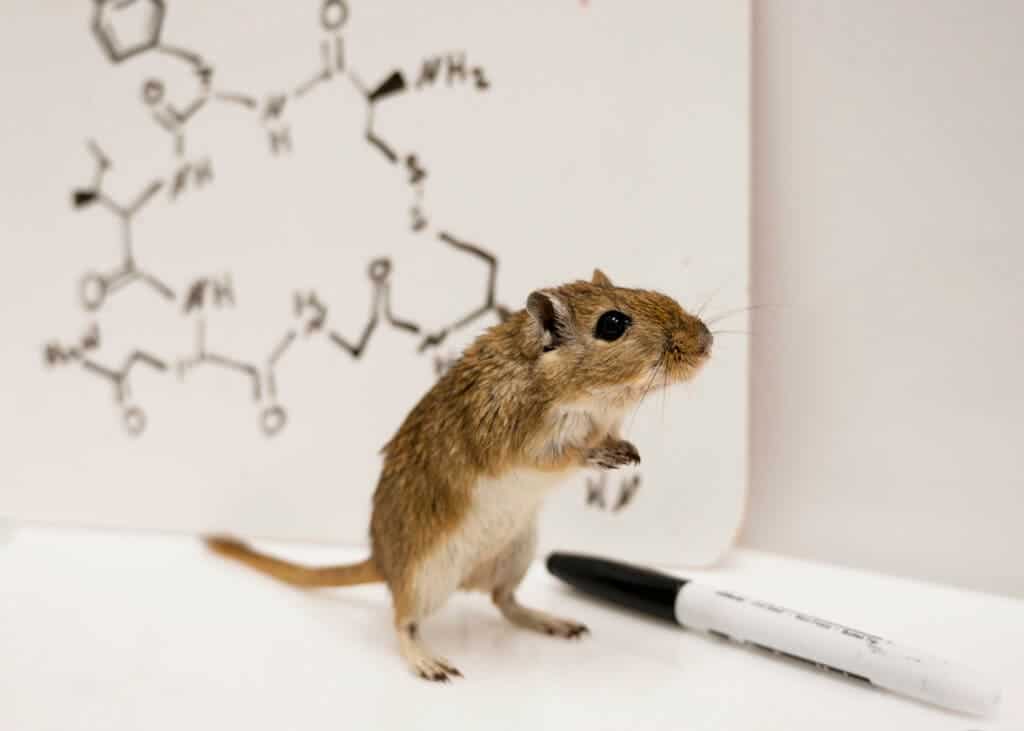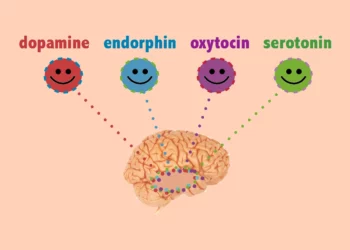The perception of testosterone as a compound that can only promote aggression, competitiveness, and dominant behavior is missing half of the story, says new research.

Testosterone, infamous as being the male-specific sex hormone, can foster friendly, prosocial behavior — at least in mice. According to the findings, this hormone interacts with the neural activity of oxytocin cells (the cells that produce the so-called “love hormone”) to promote nonsexual, prosocial behavior.
Such findings are particularly surprising as one of the effects of testosterone is to promote aggression. Seemingly, then, this hormone works to make the same individual more prosocial and more combative at the same time. So far, the results are based on work with Mongolian gerbils at Oxford College of Emory University. Further research is needed to establish whether they translate well to humans — but chances are high that they will.
Dual-purpose
“For what we believe is the first time, we’ve demonstrated that testosterone can directly promote nonsexual, prosocial behavior, in addition to aggression, in the same individual,” says Aubrey Kelly, Emory assistant professor of psychology and first author of the study. “It’s surprising because normally we think of testosterone as increasing sexual behaviors and aggression. But we’ve shown that it can have more nuanced effects, depending on the social context.”
The two team members, Prof. Kelly and Richmond Thompson, a neuroscientist at Oxford College of Emory University share a home as a married couple. The current research was born out of a merger of their individual areas of expertise. Kelly’s lab has recently focused on the neural effects of oxytocin using rodent experimental models. Thompson’s lab investigates the neural effects of steroids in fish; both, however, aim to find how hormones cause the brain to adopt rapid changes in behavior relative to social context.
The two wondered whether testosterone, given its well-documented link to heightened aggression, could also play a part in dampening prosocial behaviors. At the same time, they did also consider the possibility that the hormone would actually enhance positive social behavior in contexts where these behaviors would be appropriate. So they set out to see which was true.
Mongolian gerbils were chosen for this experiment, as the male and female of the species form long-lasting bonds and work together to raise their pups. Males can and do become aggressive during mating or against intruders to their territory, but also very often exhibit cuddling behavior with a female after she becomes pregnant; they are also highly protective of their pups.
Such protective behavior can be seen as a beneficial display of aggression. This channeled type of aggression was what made the team hypothesize that testosterone can help promote prosocial behavior, so that it could modulate aggression as well as prosocial displays.
In one of the experimental steps, male gerbils were introduced to a female gerbil, and they formed a bond. After the female became pregnant, the males displayed their usual cuddling behavior. After this, the males were given an injection of testosterone. But instead of making them more antisocial and limiting their cuddling behaviors towards the female, this testosterone had the opposite effect.
“Instead, we were surprised that a male gerbil became even more cuddly and prosocial with his partner,” Kelly says. “He became like ‘super partner.'”
In a follow-up experiment a week later, the researchers wanted to see how the male gerbils would react to an intruder. The females were removed, leaving the males from the initial experimental step alone in their cages. An unknown male was then introduced to each cage.
“Normally, a male would chase another male that came into its cage, or try to avoid it,” Kelly says. “Instead, the resident males that had previously been injected with testosterone were more friendly to the intruder.”
Most surprising, however, was how the original males reacted after receiving another injection of testosterone while the intruder was still present. They began engaging in normal defensive behavior, chasing or shying away from the unknown male.
“It was like they suddenly woke up and realized they weren’t supposed to be friendly in that context,” Kelly says.
The team hypothesizes that testosterone acts to enhance “context-appropriate behavior”. While they were sharing the cage with their partner, it made them prosocial and cuddly — but it also primed them to behave prosocially more often in the future, despite changes in context. The second shot of testosterone performed the same role but this time, due to the change in context — the presence of the unknown male — the gerbils changed their behavior to become more aggressive, as was appropriate if an intruder entered their cage.
“It appears that testosterone enhances context-appropriate behavior,” Kelly says. “It seems to play a role in amplifying the tendency to be cuddly and protective or aggressive.”
In the wild, the team explains, mating with a partner raises testosterone levels, prompting the gerbils to act cuddly at that time and the near future while sharing a space with their partner, even if levels of this hormone declined. However, if a rival male entered their burrow, the gerbil would be subjected to another surge of testosterone that would aid in quickly altering its behavior and protect its pups. In other words, testosterone doesn’t so much promote aggression as it helps animals rapidly switch between pro- and anti-social behavior, as required by their wider context.
Furthermore, gerbils that received injections of testosterone showed greater oxytocin activity in their brains while interacting with their partners compared to males that did not receive these injections.
“We know that systems of oxytocin and testosterone overlap in the brain but we don’t really understand why,” Kelly says. “Taken together, our results suggest that one of the reasons for this overlap may be so they can work together to promote prosocial behavior.”
The study furthers our understanding about how hormones impact our behaviors, and the authors explain that their findings suggest that the mechanism through which they do so is much less clear-cut than we’ve imagined so far.
“It’s like a complicated dashboard where one dial may need to move up a bit while another one moves down,” Kelly explains.
“Our hormones are the same, and the parts of the brain they act upon are even the same,” Thompson adds. “So, learning how hormones like testosterone help other animals adjust to rapidly changing social contexts will not only help us understand the biological nuts and bolts that affect their behavior, but also predict and ultimately understand how the same molecules in human brains help shape our own responses to the social world around us.”
The paper “Beyond sex and aggression: testosterone rapidly matches behavioural responses to social context and tries to predict the future” has been published in the journal Proceedings of the Royal Society B: Biological Sciences.






